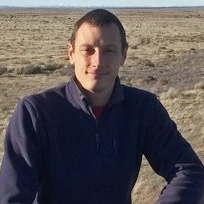Present and Future of Gravitational Wave Astronomy
A special issue of Galaxies (ISSN 2075-4434).
Deadline for manuscript submissions: closed (10 January 2022) | Viewed by 56409
Special Issue Editor
Interests: gravitational waves; gravitational wave detection; laser metrology; coatings
Special Issue Information
Dear Colleagues,
The first detection on Earth of a gravitational wave signal from the coalescence of a binary black hole system [1] in 2015 opened a new era in astronomy, allowing the scientific community to observe the Universe with a new form of radiation for the first time. More than five years later, many more gravitational wave signals have been detected [2,3], including the first binary neutron star coalescence in coincidence with a gamma ray burst and a kilonova observation [4,5].
The field of gravitational wave astronomy is rapidly evolving, making it difficult to keep up with the pace of new detector designs, discoveries, and astrophysical results.
This Special Issue is therefore intended as a review of the current status and future directions of the field from the point of view of detector technology, data analysis, and the astrophysical implications of these discoveries.
Rather than focusing on presenting new results, the articles collected in this issue will serve as a reference and an introduction to the field. This Special Issue will include reviews of the basic properties of gravitational wave signals; the detectors that are currently operating and the main sources of noise that limit their sensitivity; planned upgrades of the detectors in the short and long terms; spaceborne detectors; data analysis of the gravitational wave detector output, focusing on the main classes of detected and expected signals; implications of the current and future discoveries on our understanding of astrophysics and cosmology.
Similar reviews and introductory books already exist in the literature [6,7,8,9], and this Special Issue will continue in the tradition of these works by updating the material presented therein and bridging the gaps between detector science, data analysis, and their astrophysical implications.
References:
[1] Abbott, B. P.; et al. [LIGO Scientific Collaboration and Virgo Collaboration]. Observation of Gravitational Waves from a Binary Black Hole Merger. Phys. Rev. Lett. 2016, 116, 061102.
[2] Abbott, B. P.; et al. [LIGO Scientific Collaboration and Virgo Collaboration]. GWTC-1: A Gravitational-Wave Transient Catalog of Compact Binary Mergers Observed by LIGO and Virgo during the First and Second Observing Runs. Phys. Rev. X. 2019, 9, 031040.
[3] Abbott, R.; et al. [LIGO Scientific Collaboration and Virgo Collaboration]. GWTC-2: Compact Binary Coalescences Observed by LIGO and Virgo During the First Half of the Third Observing Run. 2020. arXiv:2010.14527[gr-qc].
[4] Abbott, B. P.; et al. [LIGO Scientific Collaboration and Virgo Collaboration]. GW170817: Observation of Gravitational Waves from a Binary Neutron Star Inspiral. Phys. Rev. Lett. 2017, 119, 161101.
[5] Abbott, B. P.; et al. Multi-messenger Observations of a Binary Neutron Star Merger. Astrophys. J. Lett. 2017, 848, L12.
[6] Bassan, M. Advanced Interferometers and the Search for Gravitational Waves. Springer: London, UK; 2014. ISBN 978-3-319-03791-2; doi:10.1007/978-3-319-03792-9.
[7] Reitze, D. H.; Saulson, P.; Grote, H. Advanced Interferometric Gravitational-Wave Detectors. World Scientific: Singapore, 2016; doi:10.1142/10181.
[8] Vajente, G.; Gustafson, E.; Reitze, D. H. Precision interferometry for gravitational wave detection: Current status and future trends. Adv. At. Mol. Opt. Phys. 2019, 68, 75. doi:10.1016/bs.aamop.2019.04.002.
[9] Maggiore, M. Gravitational Waves: Volume 2: Astrophysics and Cosmology. Oxford University Press: Oxford, UK, 2018. ISBN-13: 9780198570899; doi:10.1093/oso/9780198570899.001.0001.
Dr. Gabriele Vajente
Guest Editor
Manuscript Submission Information
Manuscripts should be submitted online at www.mdpi.com by registering and logging in to this website. Once you are registered, click here to go to the submission form. Manuscripts can be submitted until the deadline. All submissions that pass pre-check are peer-reviewed. Accepted papers will be published continuously in the journal (as soon as accepted) and will be listed together on the special issue website. Research articles, review articles as well as short communications are invited. For planned papers, a title and short abstract (about 100 words) can be sent to the Editorial Office for announcement on this website.
Submitted manuscripts should not have been published previously, nor be under consideration for publication elsewhere (except conference proceedings papers). All manuscripts are thoroughly refereed through a single-blind peer-review process. A guide for authors and other relevant information for submission of manuscripts is available on the Instructions for Authors page. Galaxies is an international peer-reviewed open access semimonthly journal published by MDPI.
Please visit the Instructions for Authors page before submitting a manuscript. The Article Processing Charge (APC) for publication in this open access journal is 1400 CHF (Swiss Francs). Submitted papers should be well formatted and use good English. Authors may use MDPI's English editing service prior to publication or during author revisions.
Keywords
- gravitation wave astrophysics
- gravitational wave detectors
- high-precision laser metrology
- gravitational wave cosmology






